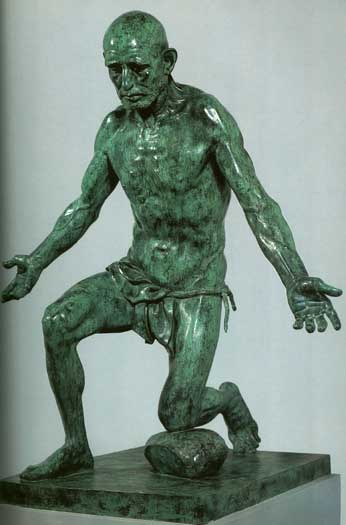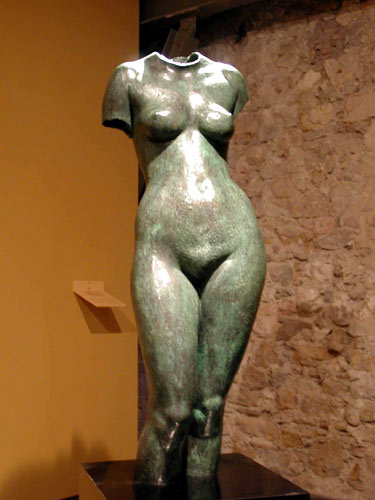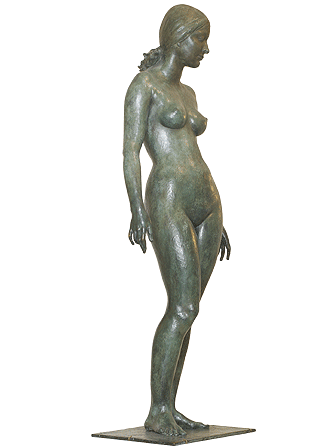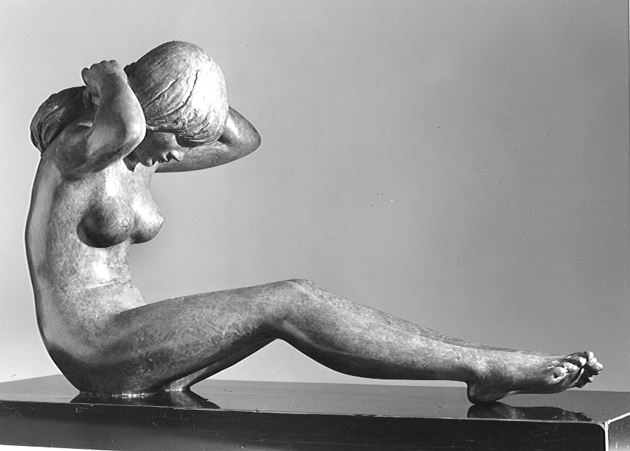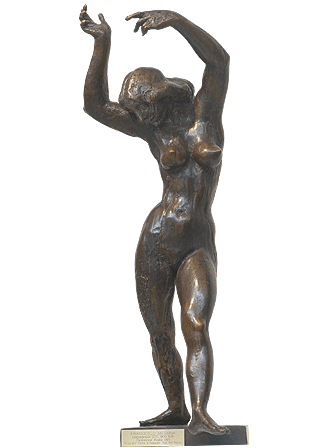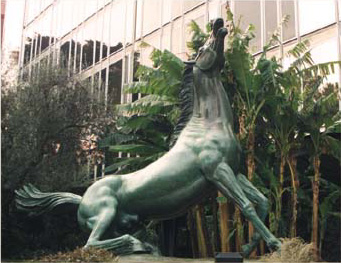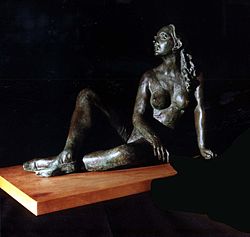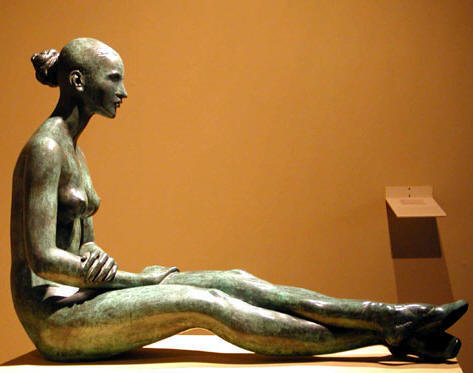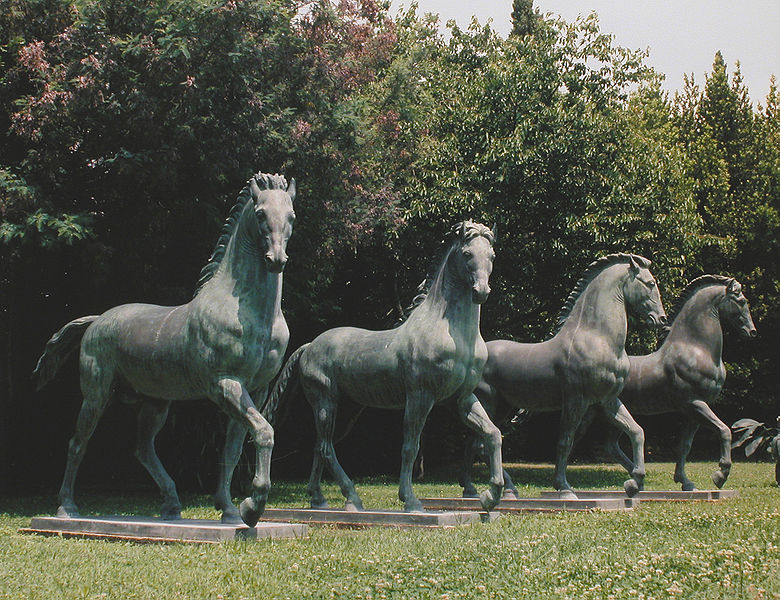<Back to Index>
- Sculptor Arturo Martini, 1889
- Sculptor Francesco Messina, 1900
PAGE SPONSOR
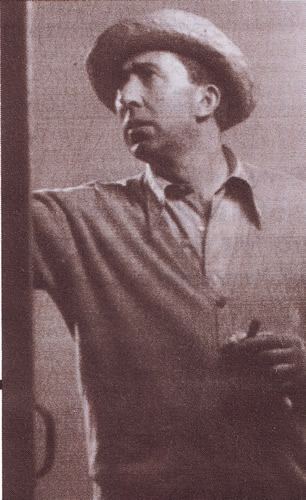
Arturo Martini (1889 – 1947) was a leading Italian sculptor between World War I and II. He moved between a very vigorous (almost ancient Roman) classicism and modernism. He was associated with public sculpture in fascist Italy, but later renounced his medium altogether.
Martini seems to have been an active supporter of the Futurist movement between 1914 and 1918. He certainly corresponded with Umberto Boccioni and produced a modernist booklet in 1918. His early works show an archaically tendency, two - dimensionality and polychrome effects.
His later works returned to a more traditional style, but with "irony, agility and an eclectic capacity to combine or reinterpret sources". Between the wars, he became the semi - official sculptor of the fascist regime. He was literally overwhelmed by commitments: great monuments and commemorative works for courthouses, churches and universities. Examples include the great bronze at La Sapienza University in Rome and the memorial to the aviator Tito Minniti.
After the fall of Mussolini, feeling that his art had been corrupted, he published an essay against sculpture in the magazine La Martini in 1945: "scultura, lingua morta" (sculpture, a dead language). He writes for example: "La scultura un'arte è da negri e senza pace" (sculpture is a black and unquiet art).
Despite this attack on his own métier, he created one significant work after the war, a marble sculpture in a tribute to the guerrilla leader Primo Visentin, known as "Masaccio", who had been killed at the end of the war in Loria (Padua) in unexplained circumstances.
Martini is as important Italian sculptor in the period
between the world wars. He worked with many materials
(clay, wood, plaster, stone, especially marble, bronze,
silver) but never moved far from figuration, although he
was able to model abstract forms, as his atmosfera di
una testa (vibrations of a head) of 1944 testifies.
He exercised great influence on later Italian sculptors
such as Marino Marini, Emilio Creco, Marcello Mascherini
and Pericle Fazzini.
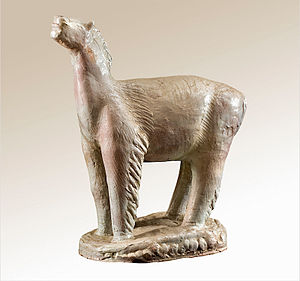
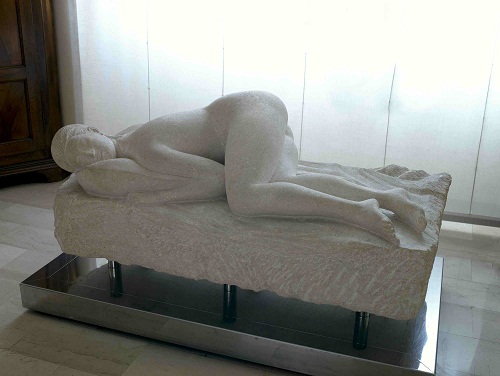
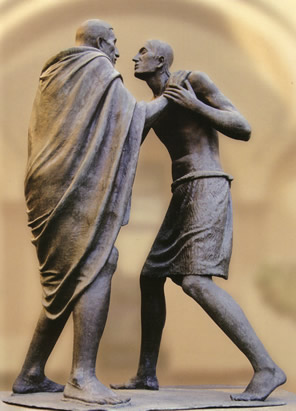
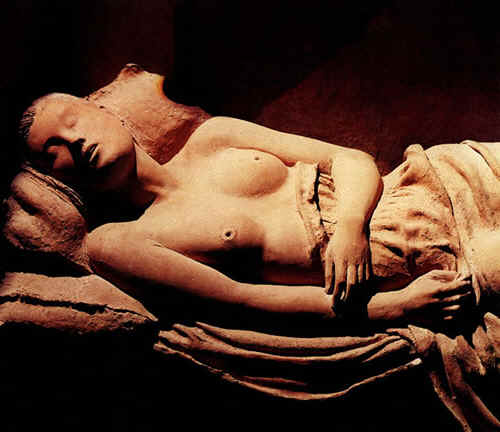
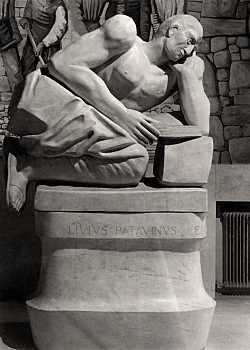
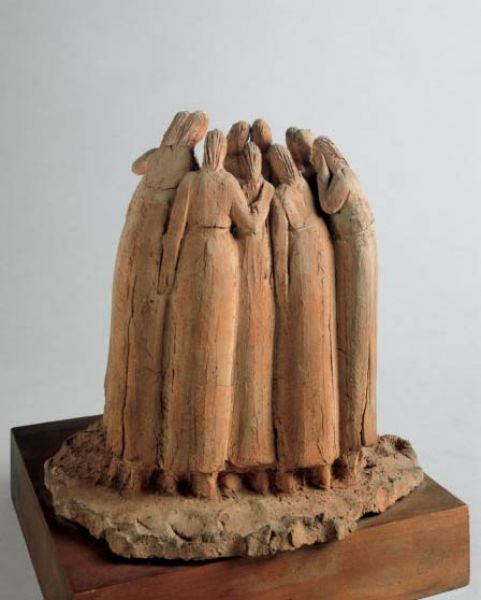
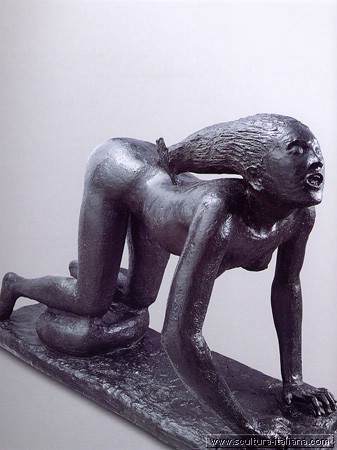
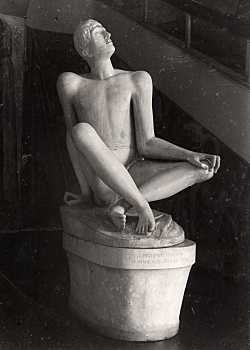
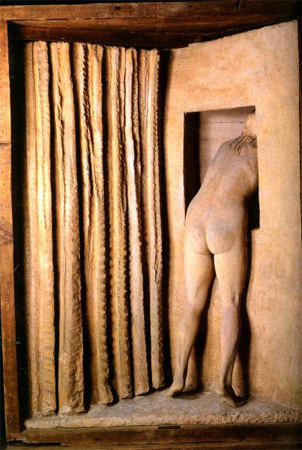
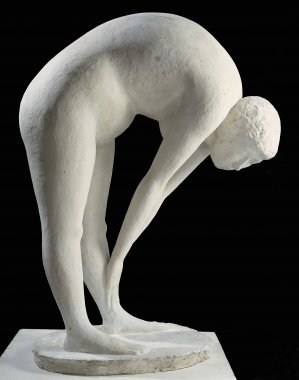
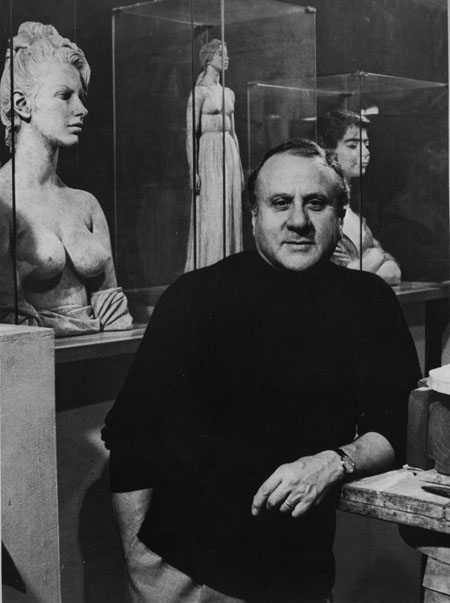
Francesco Messina (Linguaglossa, 15 December 1900 - Milan, 1995) was one of the most renowned Italian sculptors of the 20th century.
Francesco Messina was born at Linguaglossa in the Province of Catania from a very poor family. Growing up in Genoa where he also studied and lived until he was 32, he then moved to Milan.
Art historians consider him one of the most important figurative sculptors of Novecento, together with Giacomo Manzù, Arturo Martini, Marino Marini. He is the author of some of the greatest works of the Novecento Italiano and his sculptures are displayed in the most famous museums, among which: Berne, Zurich, Goteborg, Oslo, Munich, Paris, Barcelona, Berlin, São Paulo, Buenos Aires, Venice, Moscow, Saint Petersburg, Vienna, Washington, Tokyo.
From 1922 he began exhibiting his work regularly at the Biennale Internazionale d'Arte in Venice and between 1926 and 1929 he took part in the expos organized by the art group Novecento Italiano in Milan. In 1932 he moved to Milan, where in 1934 he obtained a tenured professorship in Sculpture at the Accademia di Belle Arti di Brera, of which he became the director within two years.
During those years, about him wrote Carlo Carrà:
Francesco Messina's sculpture is characterized by a simple and grandiose manner, by an idealistic and classic procedure, able to give life to forms which become "ideal images".
In the 1930s Messina exhibited at important collective expos of Italian art in Barcelona, Berlin, Berne, Goteborg, Munich, Oslo, Paris, São Paulo, Zurich, while executing various sculptures in many Italian cities. In 1936 he was appointed director of the Accademia di Brera, a position he kept until 1944.
In 1938 Giorgio de Chirico in Rome and Salvatore Quasimodo in Turin presented two personal exhibitions of Messina's work. In 1942 he won the Sculpture Prize at the XXIII Biennale Internazionale d’arte of Venice, where he exhibited fifteen sculptures and seventeen drawings.
In 1943 Messina was appointed Academic Emeritus of Italy.
On the collapse of the fascist regime, he was temporarily
dismissed from the academy, only because he had been its
director during the fascist
period. However, by 1947 he had already regained his
professorship. In the same period the artist took part in
the Graphic &
Sculpture Expo at Buenos Aires, in the Muller Gallery,
achieving a noticeable success. In 1949 he exhibited at
the 3rd Sculpture International held by the
Philadelphia Museum of Art in Philadelphia,
Pennsylvania, together with Marino Marini and Picasso.
In 1956 he participated with a personal exhibition at the XXVIII Biennale di Venezia. In 1963 he produced the great monument to Pius XII for St. Peter's Basilica in the Vatican, as well as the bust of Pietro Mascagni for the Teatro alla Scala. In the same year he was awarded the Michelangelo Prize for Sculpture in Florence.
In 1966 Messina was commissioned by Italian RAI to create the Cavallo morente (Dying Horse), which became the Italian national TV logo, placed at the entrance of the RAI Building in Rome. In 1968 he sculpted the monument to Pius XI for the Milan Cathedral. In the 1970s the Vatican assigned him the Sala Borgia of the Vatican Gallery Paulus VI, dedicated to modern sacred art, as his permanent exhibition of twenty sculptures with a sacred theme.
In 1974 the City of Milan opened the Civico Museo - Studio Francesco Messina in the ancient former church of "San Sisto al Carrobbio". This would remain the artist's permanent and official studio until his death, also hosting ca. eighty sculptures (gessos, polychrome terracottas, bronzes, waxes) and thirty graphic works (lithographies, pastels, acquarellos, pencil drawings) donated to the Comune di Milano.
In 1978 Messina attended two important exhibitions in the Soviet Union at the Pushkin Museum of Moscow and at the Hermitage of Saint Petersburg, both of which opened dedicated sections of his sculptures, with ca. 80 pieces on display. In 1981, in the former church of Saint Francis in Pordenone, an exhibition was held of his unpublished drawings, and in the same period a sculpture display at the Palazzo Flangini - Biglia of Sacile. Between 1984 and 1986, his sculptures were exhibited at the Theseus Tempel of Vienna, at the Hirshhorn Museum of Washington and the Gallery Universe of Tokyo.
Until his death in Milan in 1995, Messina continued his
work as sculptor and painter and, assisted by his daughter
Paola, amended and proofread the numerous biographies
dedicated to him all over the world.
